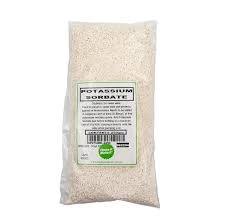
preservatives used in chips
The Role of Preservatives in Potato Chips Ensuring Freshness and Flavor
Potato chips, a beloved snack enjoyed by millions around the world, come in an array of flavors and varieties. One common question that arises among health-conscious consumers is the role of preservatives in these crunchy delights. Preservatives are substances added to food products to prevent spoilage and extend shelf life, but they often come under scrutiny for their potential health implications. In this article, we will explore the types of preservatives commonly used in chips, their functions, and the ongoing debate surrounding their safety.
Types of Preservatives in Potato Chips
The preservation of potato chips involves several types of preservatives
. The most frequently used are antioxidants, anti-microbial agents, and various other additives that help maintain flavor, color, and texture.1. Antioxidants One of the primary concerns with potato chips is the oxidation of fats, which can lead to rancidity and off-flavors. To counter this, manufacturers often use antioxidants such as BHT (butylated hydroxytoluene) and BHA (butylated hydroxyanisole). These compounds help to prolong the freshness of chips by preventing the fats from breaking down. While widely used and generally recognized as safe by food safety authorities, concerns have been raised regarding their potential links to health issues when consumed in large quantities over time.
2. Anti-microbial Agents In addition to preventing rancidity, some preservatives help inhibit the growth of bacteria, yeast, and mold. Sodium nitrite, commonly associated with cured meats, also finds its way into certain chip varieties. Though its primary function is to prevent microbial growth and maintain color, sodium nitrite has been linked to health risks, particularly when consumed in high amounts.
3. Color and Flavor Preservatives To keep potato chips visually appealing, manufacturers sometimes add color-preserving agents like citric acid and ascorbic acid. These compounds help maintain the vibrant color of the chips and enhance their flavor profile.
preservatives used in chips

4. Shelf-Life Extenders Additionally, many chips are packaged in a nitrogen atmosphere to reduce exposure to oxygen, dramatically increasing their shelf life without the need for excessive preservatives. This method is not only effective but also allows for a more natural approach to preserving freshness.
The Debate on Health Implications
Despite the effectiveness of these preservatives, there is a considerable debate about their safety and health implications. Some studies suggest that regular consumption of chips containing certain preservatives may be linked to various health issues, including allergies, hyperactivity in children, and potential carcinogenic effects. However, regulatory bodies such as the U.S. Food and Drug Administration (FDA) and the European Food Safety Authority (EFSA) maintain that when used within established safety limits, these preservatives do not pose a significant risk.
For health-conscious consumers, reading ingredient labels is crucial. Understanding which preservatives are present can help individuals make informed choices about their dietary habits. Some brands are capitalizing on this awareness by producing natural chips that use minimal or no preservatives, opting for healthier, alternative preservation methods such as refrigeration or vacuum-sealing.
Conclusion
Preservatives in potato chips serve crucial roles in enhancing shelf life and maintaining quality. While they contribute to the flavor and texture we enjoy, the ongoing discussions about their health implications cannot be overlooked. Consumers today are more informed than ever, resulting in a push for transparency in ingredient labeling and a demand for healthier snack options. As manufacturers adapt to these evolving preferences, the future of potato chips may include more natural preservation methods that satisfy both taste and health-consciousness. Ultimately, a balanced approach to snack consumption, considering both enjoyment and health, is essential in our modern dietary landscape.
-
Pure Sodium Dichloroisocyanurate Dihydrate | Powerful DisinfectantNewsAug.29,2025
-
Industrial Chemicals: Quality & Purity for Every IndustryNewsAug.28,2025
-
Nitrile Rubber Honoring Strict Production StandardsNewsAug.22,2025
-
Aspartame Ingredients Honoring Food Safety ValuesNewsAug.22,2025
-
Fertilizer for Balanced Plant NutritionNewsAug.22,2025
-
Cyanide Gold Processing with High Purity AdditivesNewsAug.22,2025
-
Formic Acid in Textile Dyeing ApplicationsNewsAug.22,2025
Hebei Tenger Chemical Technology Co., Ltd. focuses on the chemical industry and is committed to the export service of chemical raw materials.
-

view more DiethanolisopropanolamineIn the ever-growing field of chemical solutions, diethanolisopropanolamine (DEIPA) stands out as a versatile and important compound. Due to its unique chemical structure and properties, DEIPA is of interest to various industries including construction, personal care, and agriculture. -

view more TriisopropanolamineTriisopropanolamine (TIPA) alkanol amine substance, is a kind of alcohol amine compound with amino and alcohol hydroxyl, and because of its molecules contains both amino and hydroxyl. -

view more Tetramethyl Thiuram DisulfideTetramethyl thiuram disulfide, also known as TMTD, is a white to light-yellow powder with a distinct sulfur-like odor. It is soluble in organic solvents such as benzene, acetone, and ethyl acetate, making it highly versatile for use in different formulations. TMTD is known for its excellent vulcanization acceleration properties, which makes it a key ingredient in the production of rubber products. Additionally, it acts as an effective fungicide and bactericide, making it valuable in agricultural applications. Its high purity and stability ensure consistent performance, making it a preferred choice for manufacturers across various industries.





